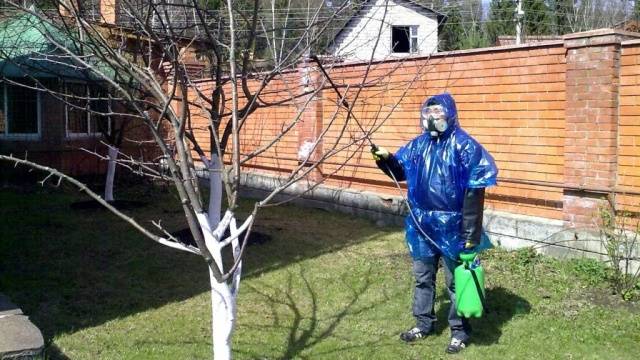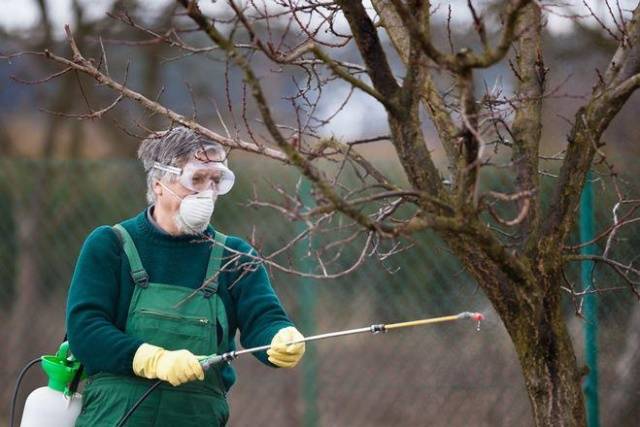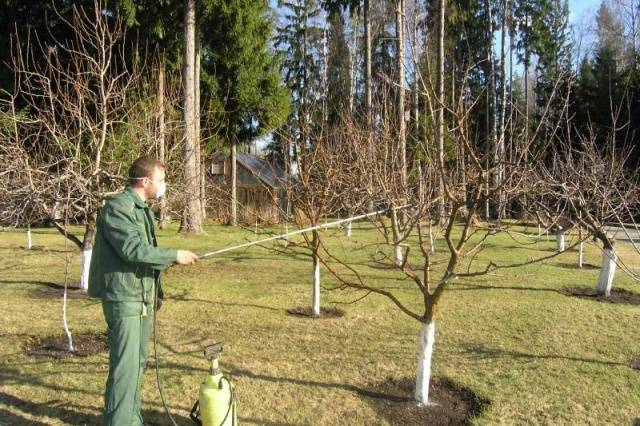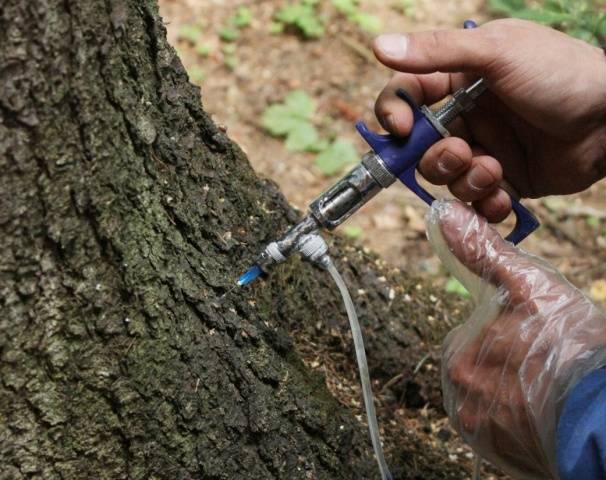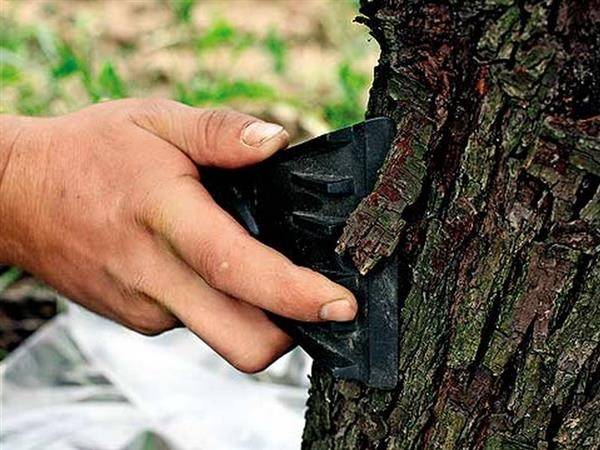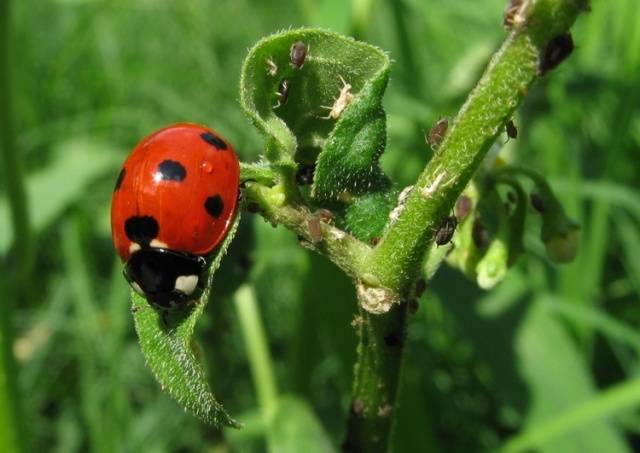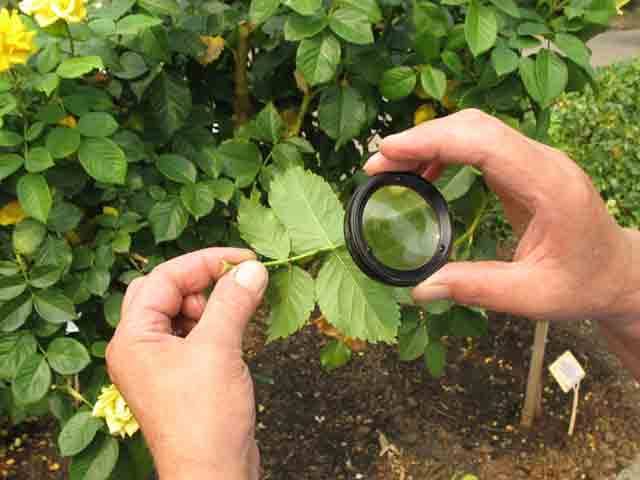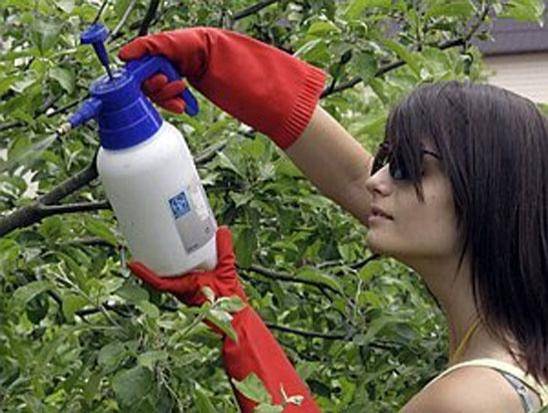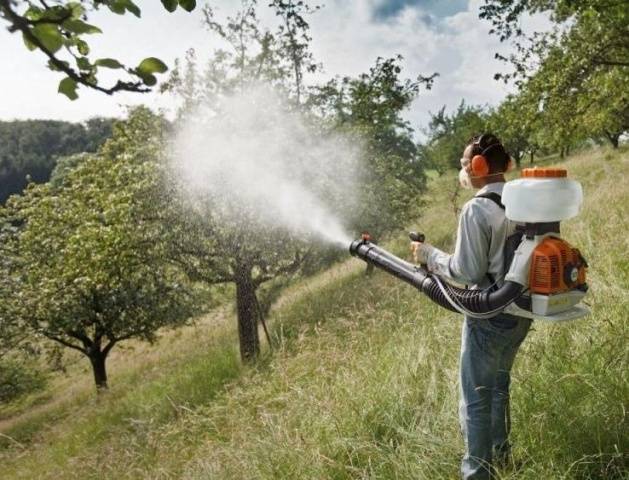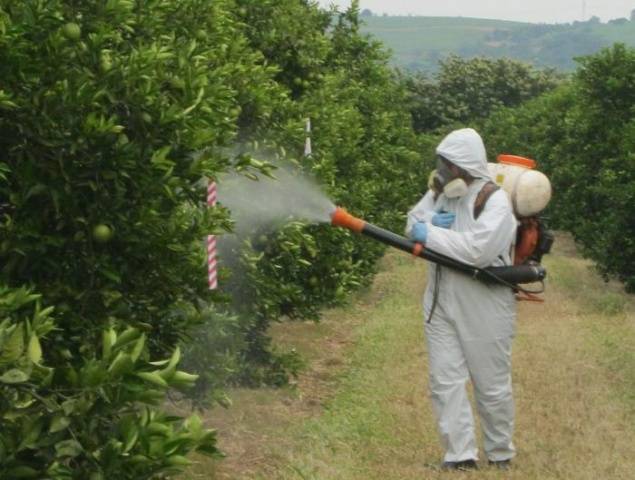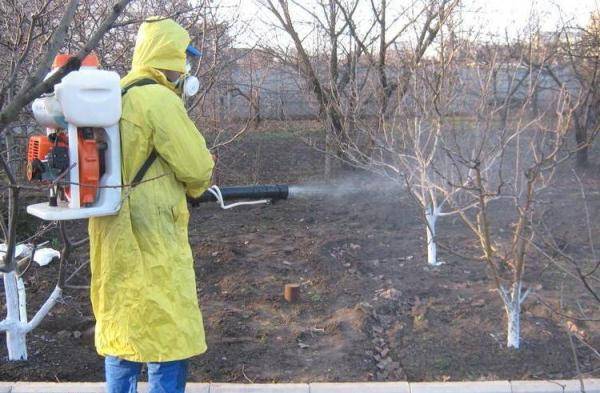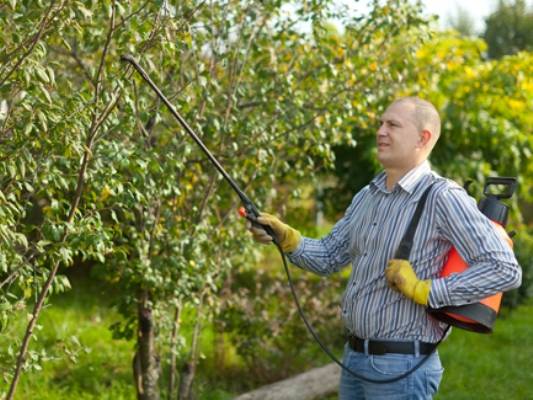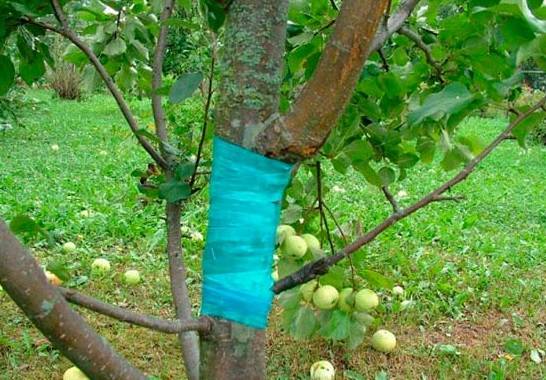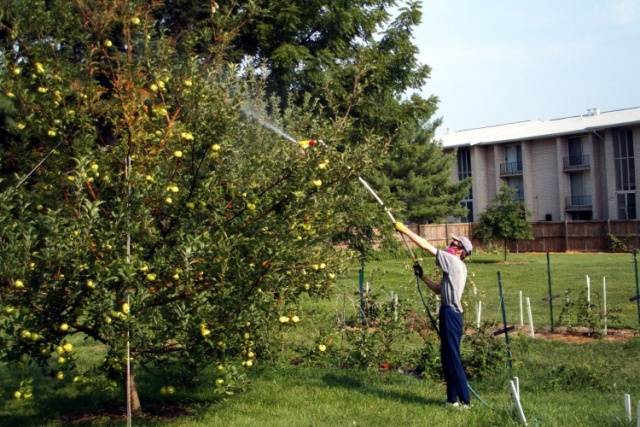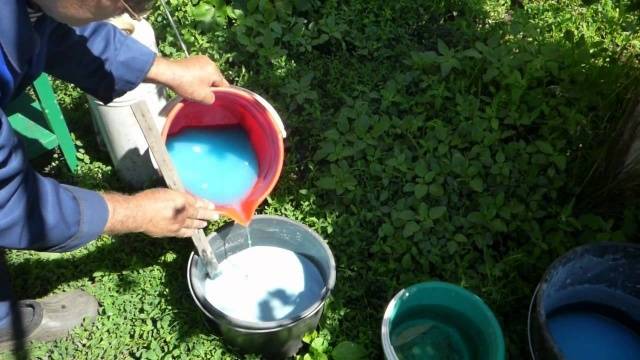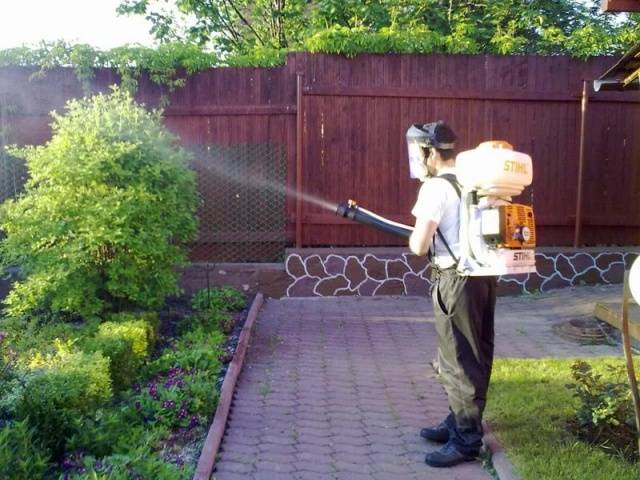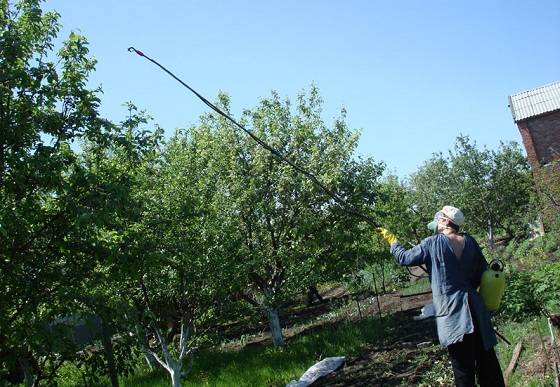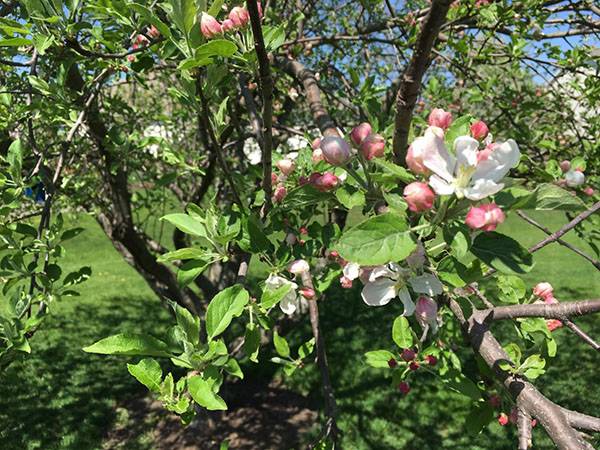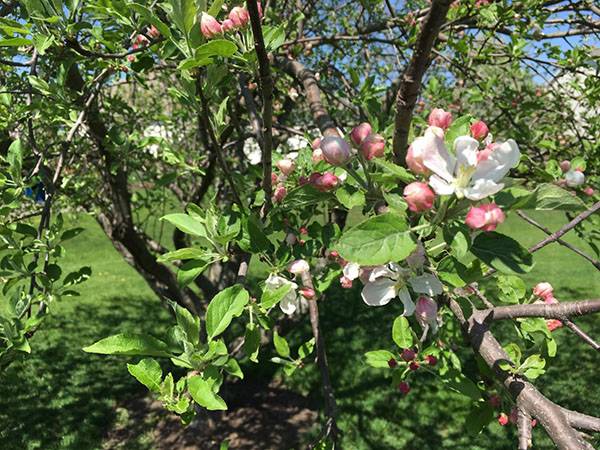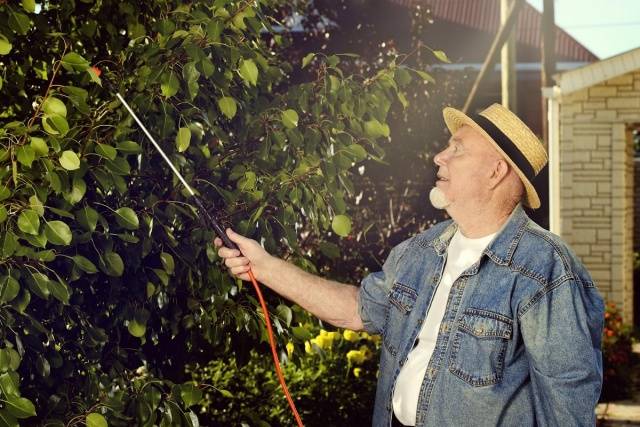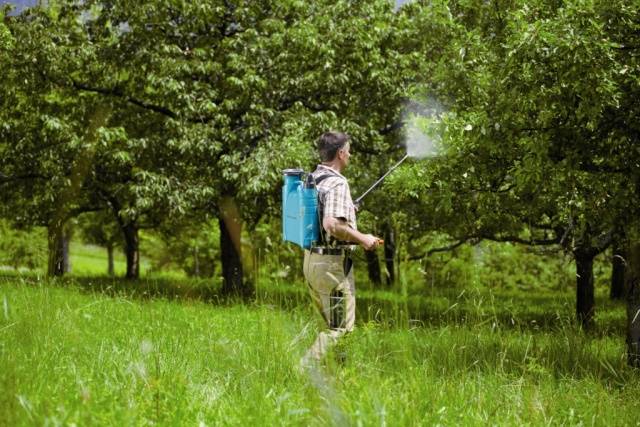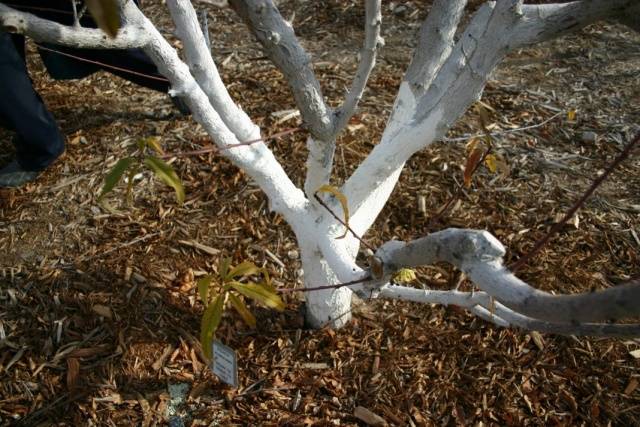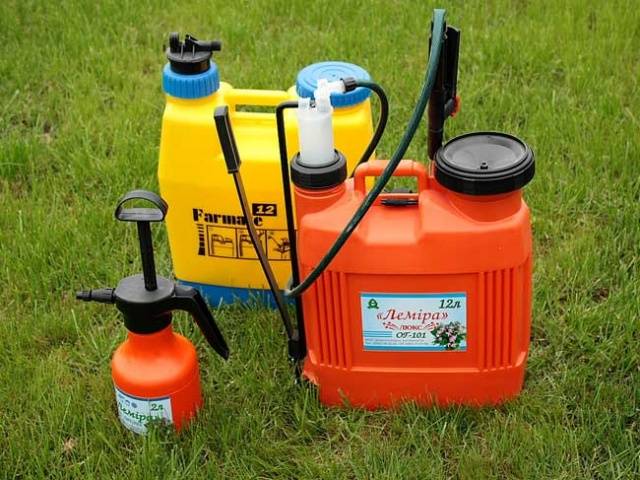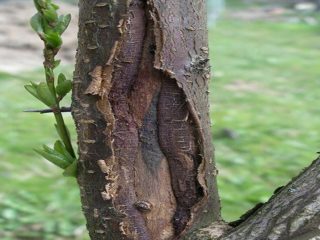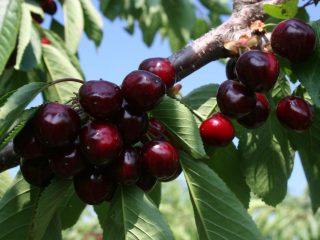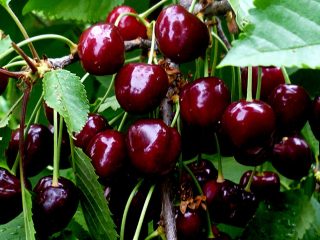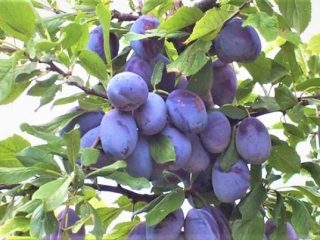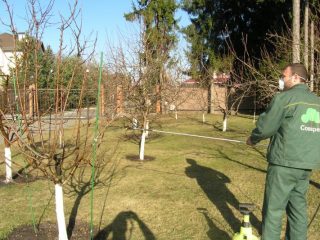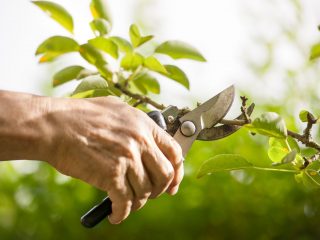Content
Despite successful breeding activities and the emergence of new varieties that are resistant to certain external influences, it is still impossible to grow a healthy crop without systematic treatment of fruit trees. Therefore, every gardener needs to know what and when to spray fruit trees.
Work in the garden begins in early spring, with the melting of the snow. As soon as the sun has warmed up, you can already open and ventilate winter shelters during the daytime, prune trees and prepare for the first spring spraying.
The need for spring treatment
In the spring, along with the trees, pests awaken from hibernation and begin to actively feed on the blooming tender buds and leaves. By intensively sucking juices from leaves and flowers, beetles and caterpillars cause irreparable harm to plants. As a result, the garden will not only not produce a full harvest, but may even die.
Spring treatment The garden includes whitewashing the trunks, digging up the trunk circles, during which pests hiding in the bark or in the soil under fallen leaves are destroyed, as well as spraying fruit trees and shrubs. Early treatment is also important because the trees and shrubs do not yet have ovaries and fruits in which the chemicals used for spraying could accumulate.
Existing preparations for spraying trees today allow you to choose from a variety of chemical or biological means of influencing pathogenic microflora and insect pests. However, many gardeners try to make do only with traditional methods.
Biological agents
Biological methods of plant protection are becoming increasingly popular. Their action is based on the activity of living entomophagous microorganisms or the toxins they secrete. Based on their lifestyle and feeding habits, entomophages are divided into two groups - predators and parasites. Entomophages can be called living insecticides; some of their species are even specially bred in the laboratory in order to be released into fields or greenhouses. Therefore, when choosing what to spray fruit trees with, you can pay attention to beneficial insects. Among the most famous beneficial predators are:
- ground beetle that eats butterflies and their pupae - up to 300 individuals during one season;
- The ladybug is an excellent aphid hunter.
Entomophages can be distinguished by their behavior - they are very active, while pests are usually inactive.
For this purpose, you can use celery, buckwheat, dill and many other plants.
Among the preparations for spraying fruit trees based on biological action, the following can be noted:
- “Trichodermin” - it is used already during the appearance of buds and then throughout the season, its active substance is a fungus that is effective against scab and various types of rot;
- "Planriz" contains bacteria that act against powdery mildew, brown rust and lepidopteran insects;
- "Pentafage" effectively protects against bacterial cancer, holey spotting and scab;
- "Phytodoctor" acts against late blight and fusarium, root rot;
- "Fitosporin-M" suppresses many bacterial and fungal diseases;
- "Gaupsin" is a universal remedy against pests and diseases;
- "Mikosan" forms a thin protective film on plants against pathogens.
Particular attention should be paid to Nemabact. It contains entomophagous parasites that penetrate the larvae and destroy them. They are capable of:
- clean the garden from harmful insects during the season;
- survive the winter safely and be useful in the next season.
Biological spraying agents have undoubted advantages:
- they will not accumulate in the soil and fruits;
- do not burn plants;
- are used in small quantities.
At the same time, biological preparations for spraying fruit trees do not act as quickly as pesticides. Their use is effective only when garden pests appear, that is, at temperatures above +10 degrees. Therefore, the first spraying in the garden in early spring will have to be done with chemicals.
Chemical methods
Chemical tree protection products deal with harmful insects and diseases much faster. On large farms, where the main task is to obtain a beautiful marketable appearance for the fruits, up to one and a half dozen sprayings are carried out per season. However, residual amounts of chemical compounds accumulate in smooth, shiny fruits.
Summer residents are trying to reduce the amount of chemicals used to spray fruit trees against pests and diseases. However, it is difficult to completely abandon them. When working with pesticides, you need to keep in mind:
- drugs act quickly;
- their effect lasts for a long time;
- each of the compounds decomposes within a certain period of time;
- drugs dissolve well in water.
The disadvantages of chemical preparations for spraying trees include:
- the need for precise dosage, otherwise you can cause severe burns to the plants;
- causing harm to the environment;
- addiction of pests to the drugs, which forces them to increase the dose or change it;
- Spray preparations can also cause harm to pets.
Most often used for chemical protection:
- solution of copper sulfate, which can be used throughout the season against putrefactive processes and many other diseases;
- iron sulfate is important for the full development of plant cells and saturating them with iron;
- Bordeaux mixture, also called “blue spray”, is used without fail;
- urea or urea is used not only as a top dressing, but also as a pest control agent;
- Preparation N 30 has long been known as an effective remedy for aphids and caterpillars.
Especially popular is “blue spraying” of fruit trees, that is, treating them with Bordeaux mixture. It contains copper sulfate, which gives the solution a bright blue color, and lime. As a result, the solution acquires a pleasant blue color. Bordeaux mixture is indispensable in the fight against scab, which especially affects young trees during the long cold spring.
Folk remedies
For those gardeners who categorically refuse to spray with chemicals, there are many time-tested folk remedies. These include:
- many types weed;
- medicinal plants, such as chamomile and nettle;
- garden crops - dill, garlic, hot pepper;
- potato and tomato tops;
- pine needles:
- products - salt, dry mustard.
Preparing solutions for spraying trees is also not difficult. Usually the grass is crushed and filled with cold water for 2-3 days. The infused and strained solution is used to spray fruit trees and shrubs. Smoking trees with tobacco dust is useful - it helps get rid of aphids and other pests. The choice of available options for spraying trees is large, but their effectiveness is much lower and requires more frequent treatments. Therefore, every gardener must decide for himself what to spray with fruit trees.
Many gardeners successfully use potassium permanganate spraying in the fight against garden and vegetable diseases.More recently, this substance was a cheap and accessible antiseptic, but now, unfortunately, it is classified as a prescription drug. However, if old stocks are available, it will become an effective remedy against late blight on vegetable crops and fungus on berry fields and even fruit trees.
Experienced gardeners prepare a concentrated solution of potassium permanganate and store it in a dark place. As necessary, it is diluted with water and mixed with copper sulfate used for spraying berry bushes - raspberries, currants and others. Spraying of fruit trees and shrubs with potassium permanganate is carried out:
- in early spring before buds appear;
- late autumn - at the end of the growing season.
Potassium permanganate is also used:
- as a source of manganese and potassium for feeding berry bushes, especially those growing on sandstones;
- disinfection of soil under trees and shrubs;
- for disinfection of garden tools.
Factors affecting processing
In spring, spraying of fruit trees takes place in 4 stages:
- the first is carried out when the kidneys are still asleep;
- in the so-called green cone phase, when its tip has just appeared, “blue spraying” is carried out;
- the third treatment of fruit trees is carried out when flower buds have already formed, but have not yet opened;
- after the end of the flowering phase, another treatment is carried out.
The exact timing of spraying fruit trees and the type of preparation are determined depending on:
- on the specific climatic conditions of a given region;
- weather features of the coming season;
- age of trees;
- the prevalence of a particular pest in the region;
- plant growing phases;
- degree of aggressiveness of the drug;
- timing of appearance of different types of pests.
Calendar of spring treatments
The first spraying of trees is considered the most important; it is carried out before the buds begin to bloom. During this period, those insects that overwintered in the tree bark and tree trunk soil, for example, bark beetles, wake up. As soon as the snow melts and the sun warms up a little, the trees are treated. Pesticides can be used as they are effective against insects but will not harm the tree. The schedule for spraying fruit trees and shrubs in spring is presented in the table.
Schedule for spring chemical treatments in the garden
| Time of processing | Purpose of processing | Drugs |
| Early spring | Preventive treatment against pests overwintering in the bark and soil | Copper sulfate Bordeaux mixture |
| Green cone phase | Against fungal diseases and insect larvae | "Blue Spray" Urea Broad spectrum insecticides |
| Bud formation phase | To improve immunity and fight against ticks and weevils | Bordeaux mixture Copper sulfate Complex drugs |
| After flowering | Prevention of putrefactive pathologies, pest control | Combined mixtures |
Before using the product for spraying fruit trees, you should carefully read the instructions. It contains information about:
- against which pests it is effective;
- what should be the concentration of the solution;
- are there any contraindications;
- for what phase of the growing season is the drug applicable?
- what can be the frequency of treatments.
Each phase of plant development is characterized by certain pests, so you should choose the right product for spraying, otherwise its use will not give the desired effect. For example, apricot is afraid of hole spot, as well as moths and leaf rollers. The most dangerous diseases for apple and pear trees are codling moth caterpillars, mites, and scab. Aphids attack almost all plants.
More often, 3% Bordeaux mixture is used for the first spraying. You can buy it as a kit or prepare it yourself. Bordeaux mixture can be replaced with urea with the addition of a small amount of copper sulfate. This composition has the property of slowing down the beginning of the growing season for ten days, which will protect the tree from recurrent frosts.
The final treatment of the garden in the spring should be carried out no earlier than 2-3 weeks after the end of flowering. She completes the stages spring spraying of fruit trees and is directed against caterpillars of various pests, weevils, mites, aphids and possible pathologies.
Summer and autumn treatments
Spraying of fruit trees is carried out throughout the growing season, depending on their condition. But too frequent treatments can also damage plants - table 2.
Spraying schedule for fruit trees during the growing season
| Season | Treatments | Notes |
| Spring | Preventive spraying, control of overwintered pests and emerging larvae | Copper-containing preparations, iron sulfate, blue spraying |
| Summer | Spraying with seasonal pests characteristic of different plants | Copper-containing preparations, special products. Carry out work early in the morning or on a cloudy day |
| Autumn | Spraying against insects that hibernate in the bark of trees and in tree trunks | Bordeaux mixture, other drugs. All treatments should be carried out only in dry weather. |
Summer spraying
Treatments of fruit trees and shrubs in the summer require taking into account certain features:
- there is a lot of foliage on the trees, and it can get burned if the preparation for spraying is chosen incorrectly or its concentration is too high;
- for young seedlings, the concentration of the fungicide solution should be much lower;
- by the end of summer, many fruit varieties ripen, which requires caution during processing;
- many drugs will also harm beneficial insects, so it is advisable to reduce the number of sprayings and control pests using trapping belts;
- It is also recommended to use folk remedies - infusions of onion, garlic, dandelion roots;
- An effective way to combat aphids is to plant tobacco in the garden, the smell of which they are afraid of.
Summer spraying of fruit trees is mainly directed against:
- codling moth caterpillars;
- bark beetle larvae;
- different types of aphids;
- spider mites.
Autumn work
One of the most important types of seasonal work in the garden is autumn spraying of fruit trees, since at this time there is active reproduction of pathogenic microflora. Moist, warm weather is especially conducive to this process. If trees are not treated before wintering, disturbances in their development will appear in the spring, which will also affect the quality of the harvest.
The best means for autumn spraying of fruit trees is Bordeaux mixture. It can be replaced with copper sulfate.These products have a good disinfecting effect. Also useful whitewash a tree trunk, filling all the cracks and pores on the stem with the solution.
Garden sprayer
It is difficult to manually carry out numerous garden sprays. Therefore, summer residents usually purchase sprayers - devices for uniformly spraying the prepared solution over the crown of a tree or shrub. They are equipped with a pump that delivers a stream to a sprayer, which breaks it into small particles. Filters installed at the outlet are designed to capture large particles. Fruit tree sprayers are:
- manual - with a simple design for pumping a solution with a volume of up to 2 liters;
- pump pumps have a larger capacity - 3-20 liters and the presence of mobile models;
- rechargeable batteries are the most popular, as they provide long-term operation without recharging;
- gasoline ones are the most convenient, thanks to a powerful engine and an automated process.
If you surround your garden with care, organize proper care, and effectively prevent pests and diseases, it will certainly reward you with a bountiful and tasty harvest.
